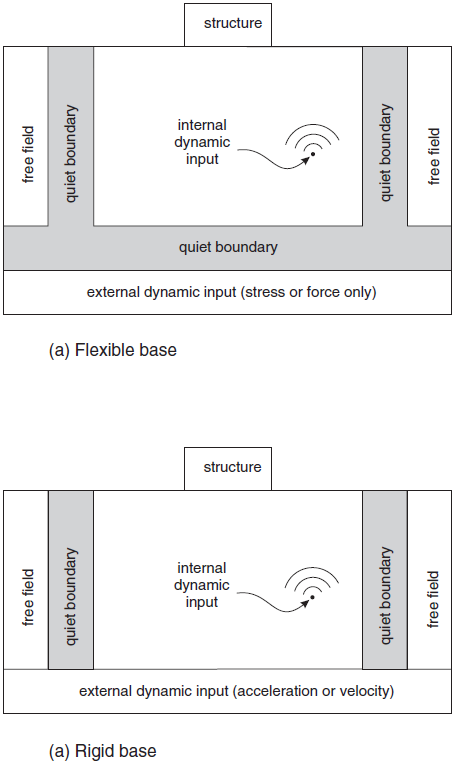

A case study of multi-seam coal mine entry stability analysis with strength reduction method.

International Journal of Minerals, Metallurgy and Materials, v. Comparative stability analyses of traditional and selective room-and-pillar mining techniques for sub-horizontal tungsten veins. : Institution of Mining and Metallurgy and Taylor & Francis, 1980.), or by using the strength reduction method (SRM) ( Navarro-Torres et al., 2011 NAVARRO-TORRES, V. 2017.), averaging the strength-to-stress ratio over the pillar’s section ( Hoek and Brown, 1980 HOEK, E., BROWN, E. : Australian Centre for Geomechanics, 11 out. Applicability of failure strain for the stability evaluation of square pillars in room and pillar mining. Napa-García and Navarro Torres, 2017 NAPA-GARCÍA, G., NAVARRO TORRES, V. Tunnelling and Underground Space Technology, v. Stochastic assessment of pillar stability at Laisvall mine using artificial neural network. Investigation of a Limestone Pillar Failure Part 2: stress history and application of fracture mechanics approach. Alternatively, safety may be inferred directly from numerical methods by means of limit strains ( Alber and Heiland, 2001 ALBER, M., HEILAND, J. International Journal of Rock Mechanics and Mining Sciences, v. 53-63.) or numerical load tests ( Martin and Maybee, 2000 MARTIN, C. London: British Geotechnical Society, 1984. (Ed.) In: DESIGN AND PERFORMANCE OF UNDERGROUND EXCAVATIONS. The use of computer applications at BCL Limited in planning pillar extraction and the design of mining layouts. Von Kimmelmann et al., 1984 VON KIMMELMANN, M., HYDE, B., MADGWICK, R. Journal of the South African Institute of Mining and Metallurgy, v. Bulletin of Canadian Institute of Mining and Metallurgy, v. Design guidelines for open stope support. Potvin et al., 1989 POTVIN, Y., HUDYMA, M., MILLER, H. Determination of the stregth of hard-rock mine pillars. Stope-and-pillar design for Elliot Lake Uranium Mines. The estimation of the pillar strength can be done by empirical methods ( Hedley and Grant, 1972 HEDLEY, D., GRANT, F. Traditional strength-based pillar design requires the pillar stress and strength to be estimated. The stability of pillars and rooms should be guaranteed for each element of the underground structures defined by the opening. The optimum size of pillars that guarantees stable rooms depends on the active load on the pillar and its strength and stiffness as well as on the carrying capacity and stiffness of the roof rock mass. In some cases, this type of mining may need ground support systems such as cable bolting or confinement ribs.ĭuring the design stage, it is very important to define the pillar dimensions that would assure the highest extraction ratio, while still ensuring the room’s stability considering all unit operations. Pillars can be composed entirely of ore or ore and waste when the ore body has a small thickness relative to the excavation height. 307-319, 2015., a pillar can be defined as the in situ rock mass between two or more underground openings. When the rock mass can be considered highly competent, pillars are usually much smaller than the rooms and the weakest rock mass between the roof, ore layer, and floor will command the opening instability. horizontal linear openings) to leave behind pillars of ore.
#Right handed input system flac3d series#
Room-and-pillar (R&P) mining is a method of extracting the material of a series of crossing rooms (i.e. Mining room-and-pillar safety numerical modeling ore recovery A case study was performed on a manganese ore mine in order to demonstrate the capabilities of the developed routine.
#Right handed input system flac3d software#
The commercial software package FLAC3D was used to implement a computation routine in FISH language that can automatically represent the main characteristics of the geomechanical conditions, lithology and geometric features of a room-and-pillar project in a fast and accurate manner.

This article presents the development and application of a flexible and automatic routine to quantify the safety of room-and-pillar mines in terms of the safety factor of pillar and room convergence. The mathematical models play an important role in the identification of problematic areas and allows different configurations to be tested in a safe manner. Thus, the study of the geomechanical behavior is of vital importance. The design of room-and-pillar mines relies on the correct estimation of the safety indicator of the underground structures formed by the excavation of drifts.


 0 kommentar(er)
0 kommentar(er)
